Archive
Monthly Archives: January 2019
Monthly Archives: January 2019
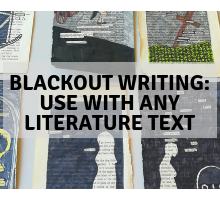
If you teach English or ELA, then you have probably heard of blackout poetry and blackout art. You might have even used this activity with your classes. Here is my take on blackout art -with a twist! You can use it with any literature text you are studying.
I wanted to find something new to do with those book-page scraps knocking about my classroom. So I decided to adjust the blackout poetry concept to fit studying literature. This activity is designed to be used after having read a little way into the novel or play because students will need to have a few things to say about the events, characters, or ideas.

If you are looking for other fun and engaging activities to use in your ELA classroom, why not check out these blog posts:
Also, each week I send an email out to my teacher-friends, in this message, I include one classroom activity (like the perfect review game) and one literature activity (like this blackout writing activity). They are always fun, engaging, and designed to create brilliant learning moments for your students. If you would like to receive this weekly email (I send it on a Sunday morning – ready to help stave off those Sunday scaries), then all you need to do is fill out the email sign up below!
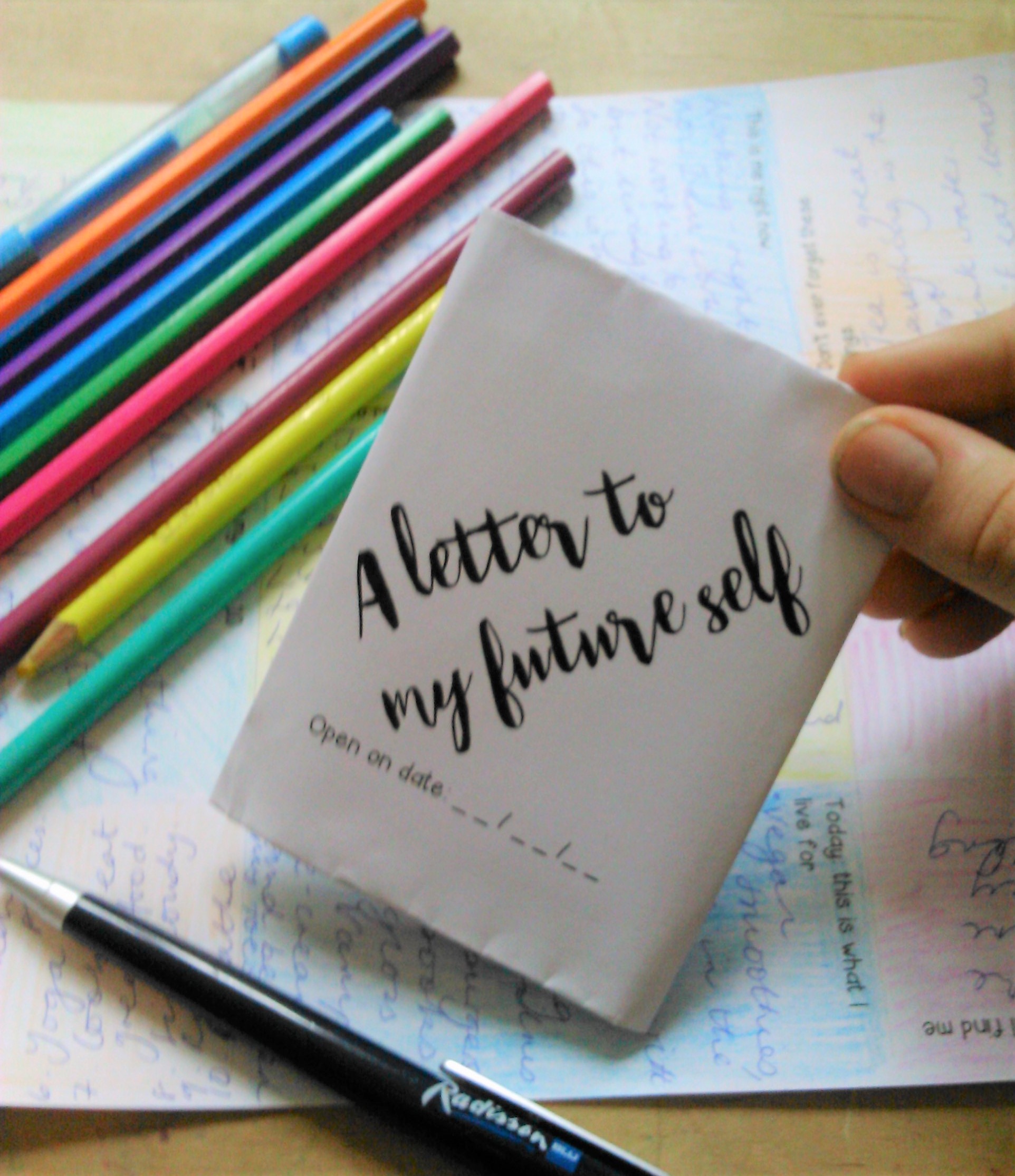
Sign up below to receive regular emails from me jammed packed with ELA teaching tips, tricks and free resources. Also access my free resource library!
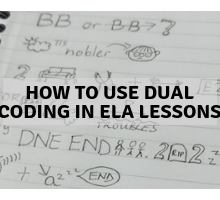
This activity is great to use with any class and almost any topic area. It makes sense, doesn’t it? To mix words and visuals to aid memory. Our students now need to memorize and to retrieve information for testing than ever before. Dual coding is one way to help students remember.
Dual coding is combining 2 ways that the mind remembers things – most commonly in the classroom – this is words and visuals.
Here you can see the beginning of Hamlet’s famous soliloquy “to be or not to be”. The challenge for students was to come up with as many visuals to replace the words in the speech as possible. They could be as creative as they liked – as long as they could read the whole speech based on what they produced. You can see the word “whether” is replaced by the sun and cloud and the word “suffer” is replaced by a sofa! The aural closeness of these words is the memory trigger.
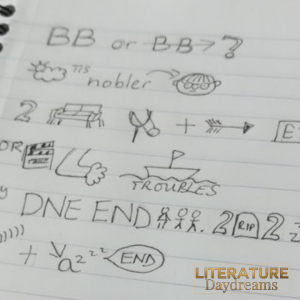
This activity isn’t a quick crafty task or something for a Friday afternoon. It took my students a good hour to think through each word in the speech and then work out how to visualize it. This close attention to the text is just another memorization technique. The very work of recreating it, helps us remember it.
I first did this activity with a group of students 5 years ago. They are now in their final year of education and English hasn’t been compulsory for the last 2 years. But when I see these kids around the school – they still love to show off for me how much of this soliloquy they can remember. So they have been through 4 full school years since they learnt this speech and they can still remember it. Dual coding works!
I teach symbols and literary devices when I am covering creative writing – we use them as marking codes as well. Then we also use the same codes for our literature units. Then we layer them up as we read through the text. Does that make sense?
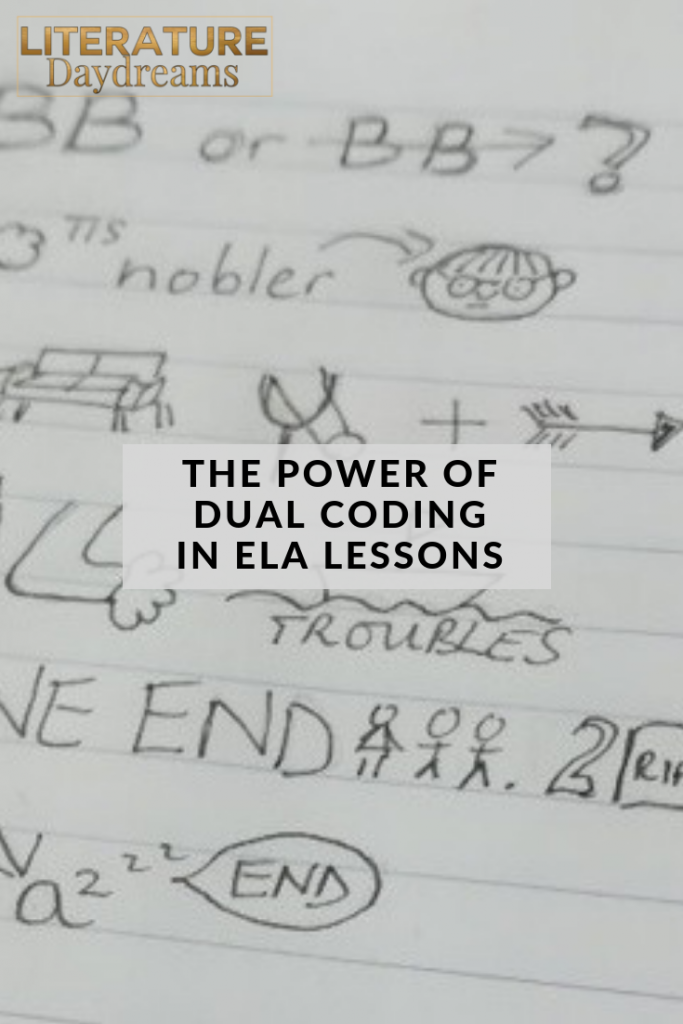
If you are looking for other fun and engaging activities to use in your ELA classroom, why not check out these blog posts:
Also, each week I send an email out to my teacher-friends, in this message, I include one classroom activity (like the perfect review game) and one literature activity (like this blackout writing activity). They are always fun, engaging, and designed to create brilliant learning moments for your students. If you would like to receive this weekly email (I send it on a Sunday morning – ready to help stave off those Sunday scaries), then all you need to do is fill out the email sign up below!

Sign up below to receive regular emails from me jammed packed with ELA teaching tips, tricks and free resources. Also access my free resource library!
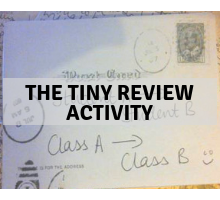
This review activity is super popular with my classes. So I thought I would share it here. It is so simple and fun that you can implement it with very little preparation at all!
Here’s how I came up with the idea:
A while ago I joked to a colleague that my year 11s knowledge of Animal Farm was just about enough to fill a stamp. I was joking, of course. However, this conversation did remind me of a good friend from my university days. Pete was (and is) an artist. He found great delight in being quirky and gauche and his best expression of this was the teeny-tiny notes left under my door, which needed a magnifying glass to be read.
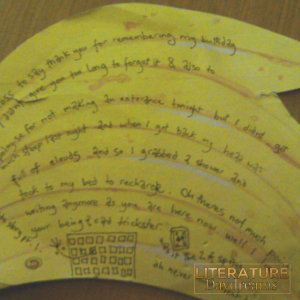
I love using the tiny class review with my classes. Essentially, it has two review strategies rolled into one – summarising and questioning. The basic idea is that students summarise their learning onto a postcard… and then another student in the class has to respond in some way!

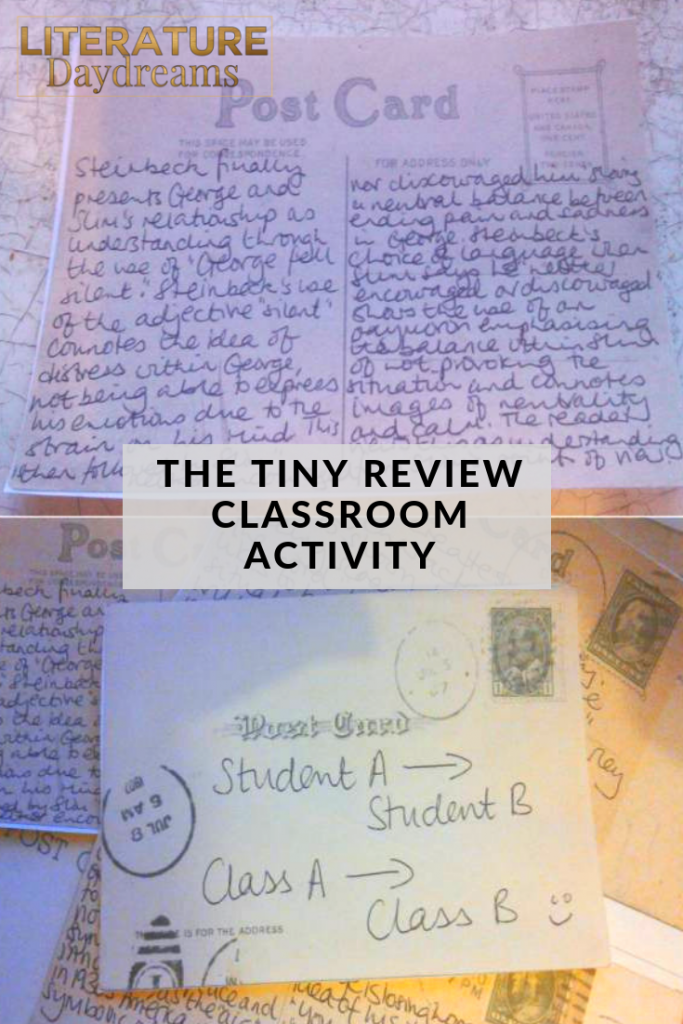
It’s the perfect activity for an end of the day lesson when writing what feels like an essay in books can be quite a challenge. You can use any postcards at all of course. Most of the time, I just use scrap paper that I’ve torn up into 4.
One unexpected benefit of this review activity was the competitive nature of my classes, when we started off writing these postcards, they just wrote them. Then after a while, we started seeing who could write 30 words on a card, then 40, then 50. In time, my students became ‘tiny writers’ (just like my friend Pete) and were squeezing up to 100 words squashed onto one postcard. Just imagine my delight!
Added to that, the competition aspect increased when I started using this as an inter-class challenge. My students all knew each other and although they didn’t sign their postcards, they got a kick out writing exceptionally hard questions for their peers in the other class. This upped-the-ante for each class during each session we used this idea. It became crazy after a while. A couple of years ago, we got so into this activity that we even made an inter-class postbox!
Drop me a comment below if you try these ideas out and let me know how they went!
If you are looking for other fun and engaging activities to use in your ELA classroom, why not check out these blog posts:
Also, each week I send an email out to my teacher-friends, in this message, I include one classroom activity (like the perfect review game) and one literature activity (like this blackout writing activity). These tasks are fun, engaging, and will create brilliant learning moments for your students. If you would like to receive this weekly email (I send it on a Sunday morning – ready to help stave off those Sunday scaries), then all you need to do is fill out the email sign up below!

Sign up below to receive regular emails from me jammed packed with ELA teaching tips, tricks and free resources. Also access my free resource library!